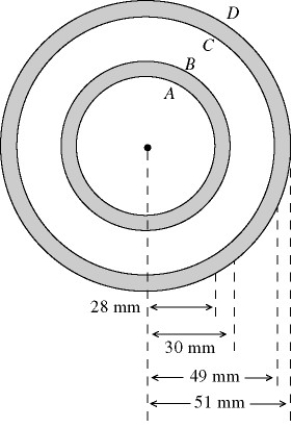Multiple Choice
The cross section of a long coaxial cable is shown in the figure, with radii as given. The linear charge density on the inner conductor is -40 nC/m and the linear charge density on the outer conductor is -50 nC/m. The inner and outer cylindrical surfaces are respectively denoted by A, B, C, and D, as shown. (ε0 = 8.85 × 10-12 C2/N ∙ m2) The magnitude of the electric field at a point that is 94 mm from the axis is closest to 
A) 17,000 N/C.
B) 15,000 N/C.
C) 13,000 N/C.
D) 11,000 N/C.
E) 9600 N/C.
Correct Answer:

Verified
Correct Answer:
Verified
Q9: An uncharged conductor has a hollow cavity
Q14: A charge Q is uniformly spread over
Q23: If the electric flux through a closed
Q30: A nonuniform electric field is directed along
Q31: An irregular conductor carries a surface charge
Q32: A nonuniform electric field is directed along
Q35: As shown in the figure, a square
Q36: A solid nonconducting sphere of radius R
Q38: An infinitely long nonconducting cylinder of radius
Q39: The cross section of a long coaxial